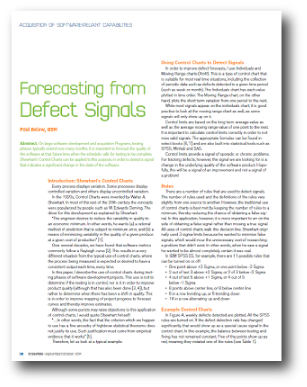 How in the world does landing on an aircraft carrier relate to software estimation? Anyone who has ever experienced the terror joy of landing a jet on an aircraft carrier, especially on that dark, stormy night with no moon and a pitching deck, appreciates the importance of a good start. Your line-up is critical, as is your airspeed, angle-of-attack and attention to the "ball" – that tiny little yellow dot between the rows of green lights. As a former Bombardier/Navigator in the Grumman A6E Intruder, I have teamed with pilots on over 300 landings, all of which I have lived through. My job was to monitor and call the line-up and radar altimeter, handle the radios, manage the fuel and generally avoid sounding terrified for the entire evolution.
How in the world does landing on an aircraft carrier relate to software estimation? Anyone who has ever experienced the terror joy of landing a jet on an aircraft carrier, especially on that dark, stormy night with no moon and a pitching deck, appreciates the importance of a good start. Your line-up is critical, as is your airspeed, angle-of-attack and attention to the "ball" – that tiny little yellow dot between the rows of green lights. As a former Bombardier/Navigator in the Grumman A6E Intruder, I have teamed with pilots on over 300 landings, all of which I have lived through. My job was to monitor and call the line-up and radar altimeter, handle the radios, manage the fuel and generally avoid sounding terrified for the entire evolution.
The process was made significantly easier if we arrived at the 3/4 mile point behind the ship at the right airspeed, gross weight, angle of attack, altitude and line up. Sort of like juggling a bunch of skittish cats.
But when all those parameters came together, we had a good start. When embarking on a software development project, or any engineering project, it’s equally important to have a strong foundation. That means having a solid idea of the characteristics of the project, what resources are (or should be) available, what duration is most likely and how good does it have to be. A software estimation tool can provide the project manager with this essential information.


 How in the world does landing on an aircraft carrier relate to
How in the world does landing on an aircraft carrier relate to